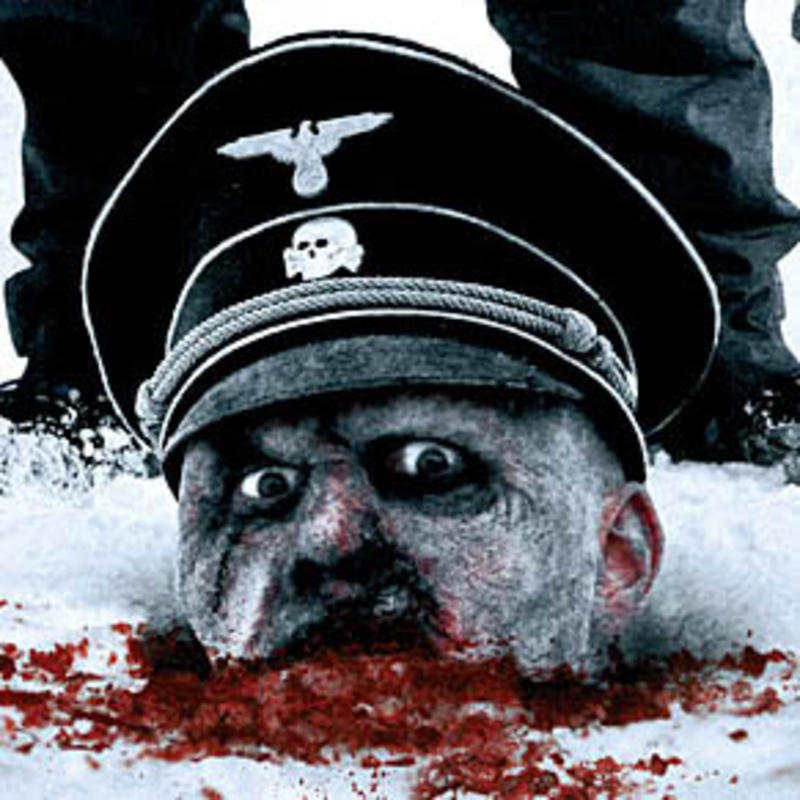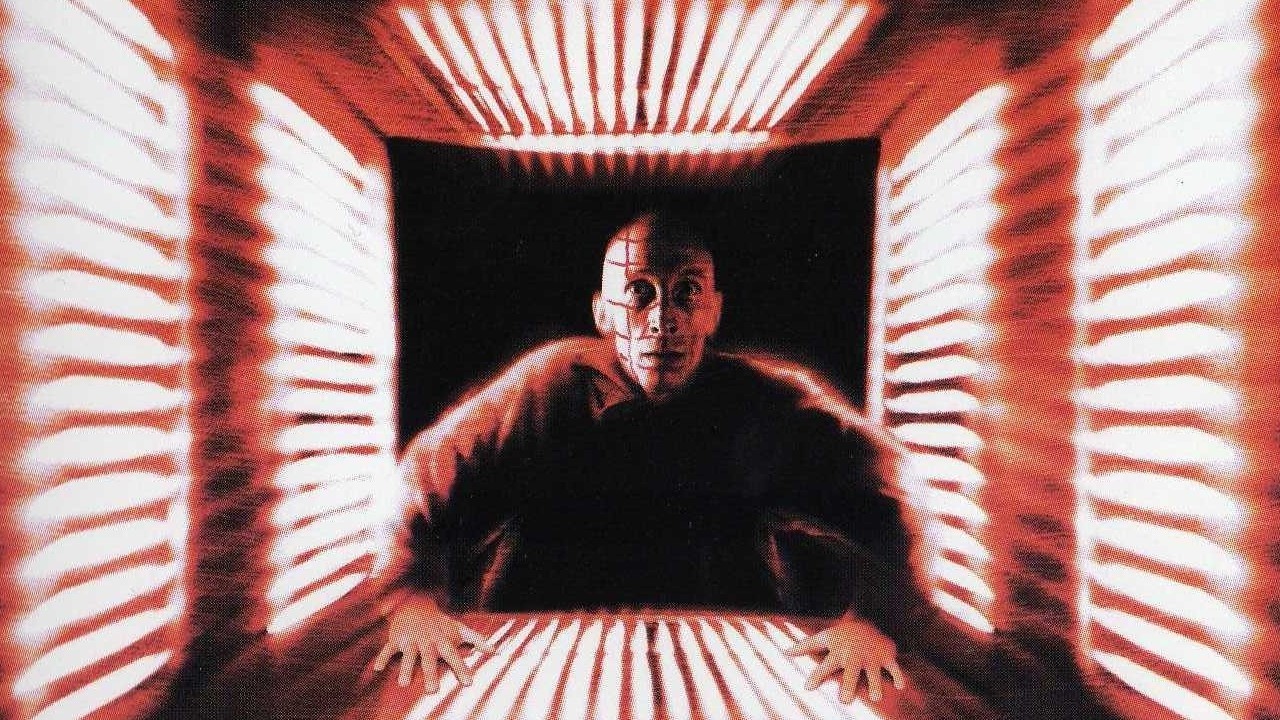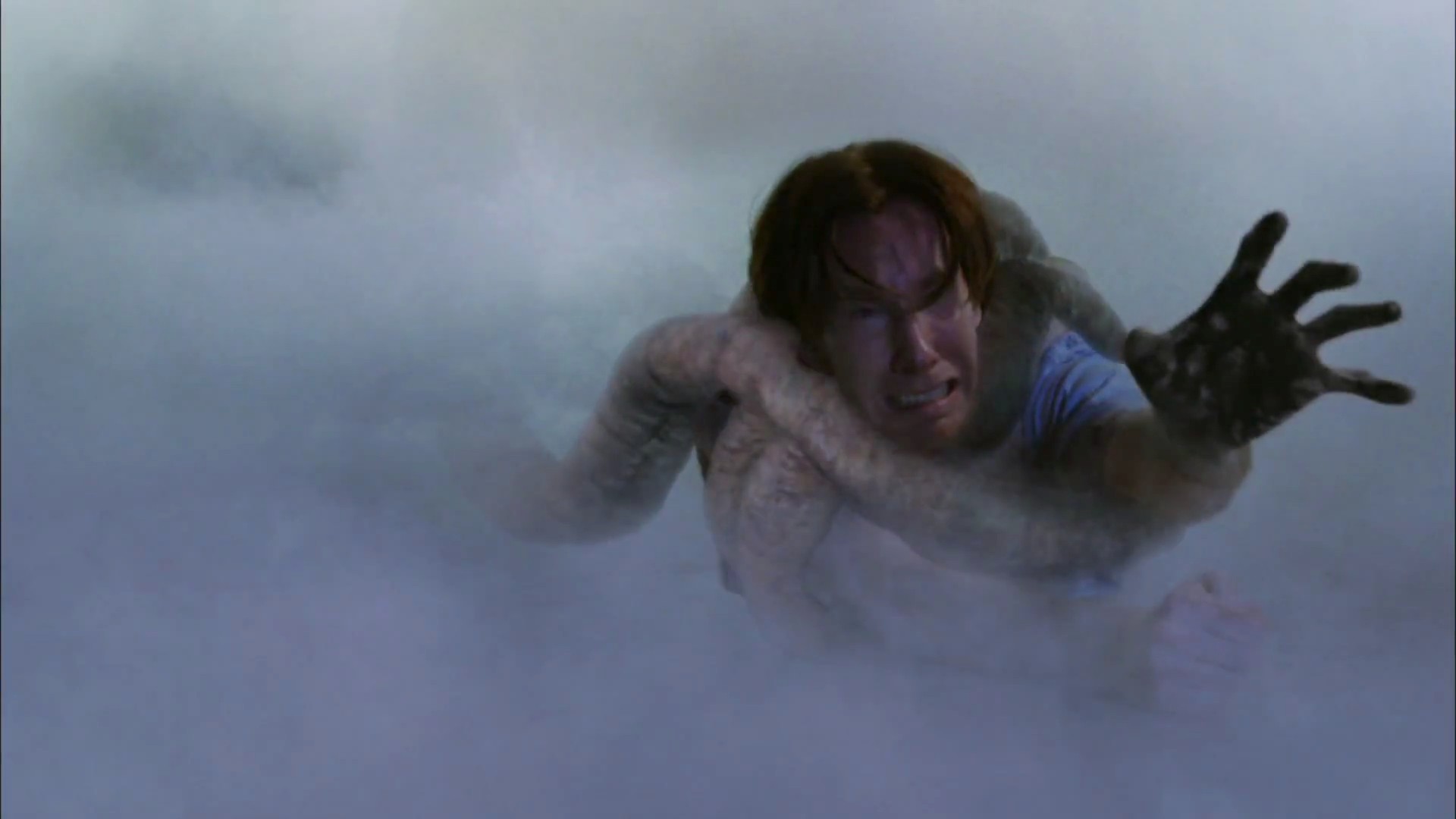Ever since Romero reimagined the mindless monster in 1968, horror cinema’s go-to beast has been the zombie. Perfect for true terror or splatter comedy – or, hell, even a romantic comedy now and again – films of the undead proliferated faster than a zombie horde. You can find them in nearly every genre, on almost every continent, and in just about every possible medium including children’s books. (If you have not read Ten Little Zombies, it makes an excellent stocking stuffer. Trust us!)
To help us hone our list we enlisted Dave Man, who kindly joins us on this week’s podcast. If you only have time for 5 (or maybe 6) zombie films, which to choose? Rest easy! We have some candidates.
5. Zombie (1979)
Originally filmed as an unofficial sequel to Romero’s Dawn of the Dead, this was director Lucio Fulci’s first true horror film, though he’d done several very violent films previously (Don’t Torture a Duckling, for instance). Shot to showcase violence, and immeasurably aided by Fabio Frizzi’s score, Zombie became a turning point in Z films and in Italian horror.
A boat docks in New York with one undead seaman aboard. A young woman and an investigative reporter head out to the island of that boat’s origins, where her father has been doing scientific work, only to find that the island is overrun with hungry walking corpses.
Fulci’s film tries to marry Romero’s take on the undead with the traditional voodoo narrative of films like White Zombie, but it’s the director’s vivid imagination for festering flesh, plus his now go-to shock of eye gouging, that helped the film make its mark. Plus, zombie-on-shark action!
4. Dead Snow (2009)
Like its portly nerd character Erlend, Dead Snow loves horror movies. A familiarly self-referential “cabin in the woods” flick, Dead Snow follows a handsome mixed-gender group of college students as they head to a remote cabin for Spring Break. A creepy old dude warns them off with a tale of local evil. They mock and ignore him at their peril.
But co-writer/director/Scandinavian Tommy Wirkola doesn’t just obey these rules. He embraces our prior knowledge of the path we’re taking to mine for comedy, but he doesn’t give up on the scares. Wirkola’s artful imagination generates plenty of startles and gore by the gallon.
Spectacular location shooting, exquisite cinematography, effective sound editing and a killer soundtrack combine to elevate the film above its clever script and solid acting. Take the gorgeous image of Norwegian peace: a tent, lit from within, sits like a jewel nestled in the quiet of a snowy mountainside. The image glistens with pristine outdoorsy beauty – until it … doesn’t.
https://www.youtube.com/watch?v=55uGN58UOkk
3. Braindead (Dead Alive) (1992)
Rated R for “an abundance of outrageous gore,” Braindead is everything the early Peter Jackson did well. It’s a bright, silly, outrageously gory bloodbath.
Lionel Cosgrove (Timothy Balme) secretly loves shopkeeper Paquita Maria Sanchez (Diana Penalver). Unfortunately, Lionel’s overbearing sadist of a mother follows the lovebirds to a date at the zoo, where she’s bitten (pretty hilariously) by a Sumatran rat-monkey (do not mistake this dangerous creature for a rabid Muppet or misshapen lump of clay). The bite kills her, but not before she can squeeze pus into some soup and wreak general havoc, which is nothing compared to the hell she raises once she comes back from the dead.
Braindead is so gloriously over-the-top that nearly any flaw can be forgiven. Jackson includes truly memorable images, takes zombies in fresh directions, and crafts characters you can root for. But more than anything, he knows where to point his hoseful of gore, and he has a keen imagination when it comes to just how much damage a lawnmower can do.
2. Dawn of the Dead (1978/2004)
Romero returned to the land of the undead in ’78 with a full-color sequel to Night. Set in Philadelphia, at a news broadcast gone crazy, the film follows a news producer, her chopper pilot boyfriend, and two Philly SWAT cops ready to abandon the organized zombie fight and find peace elsewhere. The four board a helicopter, eventually landing on the roof of a mall, which they turn into their private hideaway.
Romero, make-up legend Tom Savini, and Italian horror director Dario Argento teamed up for the sequel. You feel Argento’s presence in the score and the vivid red of the gore. Ken Foree and Scott Reiniger as the buddies from SWAT create the most effective moments, whether character-driven tension or zombie-driven action. Romero’s politics are on his sleeve with this one. He uses the “z” word, digs at consumerism, shows full-color entrails, and reminds us again that the undead may not be our biggest enemy once the zombie-tastrophe falls.
Plenty of filmmakers have remade or reimagined Romero’s flicks, but none did it as well as Zack Snyder.
In Romero’s version, themes of capitalism, greed, mindless consumerism run through the narrative. Snyder, though affectionate to the source material, focuses more on survival, humanity, and thrills. (He also has a wickedly clever soundtrack.) It’s more visceral and more fun. His feature is gripping, breathlessly paced, well developed and genuinely terrifying.
https://www.youtube.com/watch?v=PpuNE1cX03c
https://www.youtube.com/watch?v=rhsutNfvuAY
1 Night of the Living Dead (1968)
From the brightly lit opening cemetery sequence to the paranoid power struggle in the house to the devastating closing montage, Night of the Living Dead teems with the racial, sexual, and political tensions of its time. An unsettlingly relevant George A. Romero knew how to push societal panic buttons.
As the first film of its kind, the lasting impact of this picture on horror cinema is hard to overstate. His inventive imagination created the genre and the monster from the ground up.
They’re dead.
They’re back.
They’re hungry for human flesh.
Their bite infects the bitten.
The bitten will eventually bite.
Aim for the head.
The shrill sense of confinement, the danger of one inmate turning on another, and the unthinkable transformation going on in the cellar build to a startling climax – one that utterly upends expectations – followed by the kind of absolutely genius ending that guarantees the film’s eternal position in the annals of horror cinema.
Listen to the whole podcast HERE.









